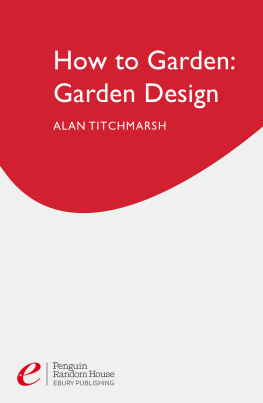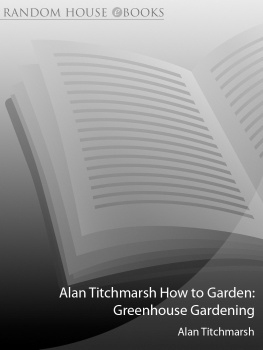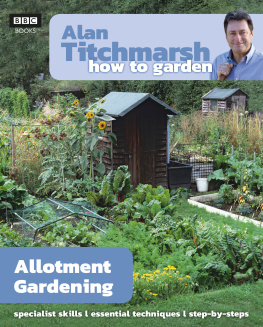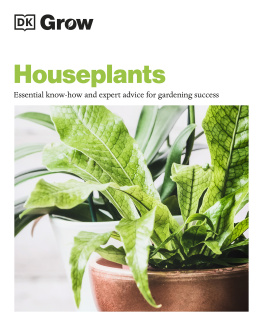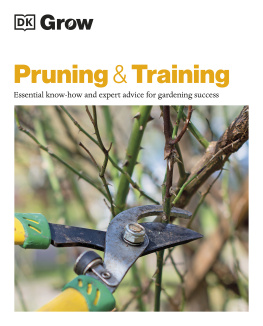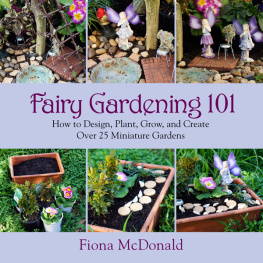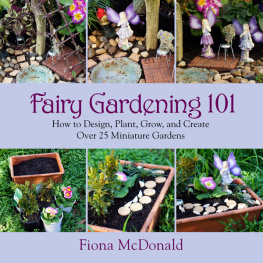Contents
About the Book
Alan Titchmarsh imparts a lifetime of expertise in these definitive practical guides for beginners and experienced gardeners. Step-by-step illustrations and easy-to-follow instructions guide you through the basic skills and on to the advanced techniques, providing everything you need to create and maintain your dream garden.
- Creative design ideas for brightening up dark spaces, including north-facing walls
- Directory of plants that will thrive in shady spots
- Care advice for shady lawns and how to deal with moss and algae
- Ways to achieve year-round colour and interest
- Step-by-step guides to essential techniques
About the Author
Originally trained at Hertfordshire College of Horticulture and Royal Botanic Gardens, Kew, Alan Titchmarsh is the author of over 40 books about gardening, including How to be a Gardener Book 1: Back to Basics, the fastest-selling of all time in the genre, and the bestselling The Kitchen Gardener: How to Grow Your Own Fruit and Veg. He writes for BBC Gardeners World Magazine, and is gardening correspondent for the Daily Express and Sunday Express. He has presented Gardeners World, the annual coverage of The Chelsea Flower Show and Nature of Britain, and has his own daily chatshow.
Introduction
Gardening is one of the best and most fulfilling activities on earth, but it can sometimes seem complicated and confusing. The answers to problems can usually be found in books, but big fat gardening books can be rather daunting. Where do you start? How can you find just the information you want without wading through lots of stuff that is not appropriate to your particular problem? Well, a good index is helpful, but sometimes a smaller book devoted to one particular subject fits the bill better especially if it is reasonably priced and if you have a small garden where you might not be able to fit in everything suggested in a larger volume.
The How to Garden books aim to fill that gap even if sometimes it may be only a small one. They are clearly set out and written, I hope, in a straightforward, easy-to-understand style. I dont see any point in making gardening complicated, when much of it is based on common sense and observation. (All the key techniques are explained and illustrated, and Ive included plenty of tips and tricks of the trade.)
There are suggestions on the best plants and the best varieties to grow in particular situations and for a particular effect. Ive tried to keep the information crisp and to the point so that you can find what you need quickly and easily and then put your new-found knowledge into practice. Dont worry if youre not familiar with the Latin names of plants. They are there to make sure you can find the plant as it will be labelled in the nursery or garden centre, but where appropriate I have included common names, too. Forgetting a plants name need not stand in your way when it comes to being able to grow it.
Above all, the How to Garden books are designed to fill you with passion and enthusiasm for your garden and all that its creation and care entails, from designing and planting it to maintaining it and enjoying it. For more than fifty years gardening has been my passion, and that initial enthusiasm for watching plants grow, for trying something new and for just being outside pottering has never faded. If anything I am keener on gardening now than I ever was and get more satisfaction from my plants every day. Its not that I am simply a romantic, but rather that I have learned to look for the good in gardens and in plants, and there is lots to be found. Oh, there are times when I fail when my plants dont grow as well as they should and I need to try harder. But where would I rather be on a sunny day? Nowhere!
The How to Garden handbooks will, I hope, allow some of that enthusiasm childish though it may be to rub off on you, and the information they contain will, I hope, make you a better gardener, as well as opening your eyes to the magic of plants and flowers.
Getting to know shade
Every garden has at least one patch of shade, and some gardens are in shadow for most of the time. All too often, these areas are neglected because they are considered difficult. Yet many plants actually prefer to spend some time in the shade, especially in summer when the sun can be relentless. Shade is an asset so much so that if your garden has little or no shade it is well worth creating some. If your garden already has plenty, you can get going straight away transforming that ivy-covered, moss-ridden corner into one of the most delightful and rewarding parts of your garden.
Types of shade
You dont need to be an expert gardener to recognize shade. Go outside on a sunny day and you will see it slicing up your garden into segments. But what type of shade are you looking at? And how much light actually gets to ground level where the plants grow? It is clear that not all shade is the same. The very fact that there are so many words to describe it dappled, heavy, light, partial, full, temporary, permanent is a good indication of its variety.
Definitions and degrees
Apart from the wonderful dappled shade that you find under the canopies of deciduous trees where filtered light makes shifting patterns on the woodland floor theres the altogether more permanent, darker, shade found alongside evergreen hedges. Theres temporary shade along east- and west-facing boundaries: the wall that greets the sunrise will be in full shade by the afternoon, while the west-facing wall, shaded in the morning, will be in full sun by the afternoon. Theres amorphous shade, too, which hugs larger plants and garden structures and creeps and changes as the sun tracks its way across the sky.
Shade changes with the time of year. Borders adjacent to buildings in full sun in summer are plunged into near-continuous shade during the depths of winter, while areas protected from the summers midday sun by deciduous trees are a whole lot lighter in winter when the trees have lost their leaves.
So what does all this mean for the gardener? First, it means the range of plants you can grow in your garden is dramatically increased. Specimens that are scorched by direct sunlight sigh with relief under the canopy of others.
Shade usually means shelter, too, where tender plants can nestle securely under the protection of more robust neighbours.

As a rule, east- and west-facing walls provide temporary shade.

Not all seemingly shady corners are the same: those enjoying short periods of direct sun will give you scope for more varied plant displays.



